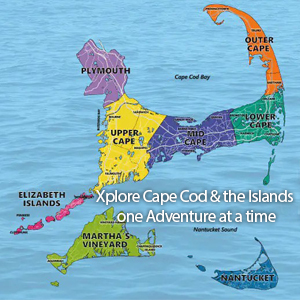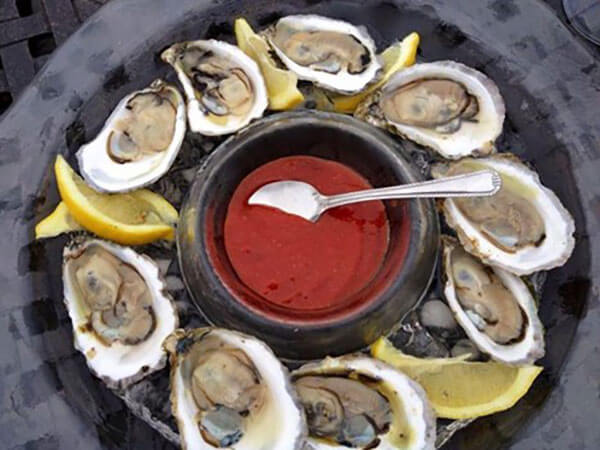
Oysters are synonymous with Cape Cod. If you visit the Cape in the summer, you can’t walk more than a few blocks without seeing somewhere with oysters on the menu. However, if you’ve ever wanted to try a freshly caught oyster, one of the best ways to do it is by trying recreational oystering on Cape Cod.
Keep reading to discover how to properly start oystering on Cape Cod, what you need to catch oysters, and the best places to catch them!
Getting a Permit
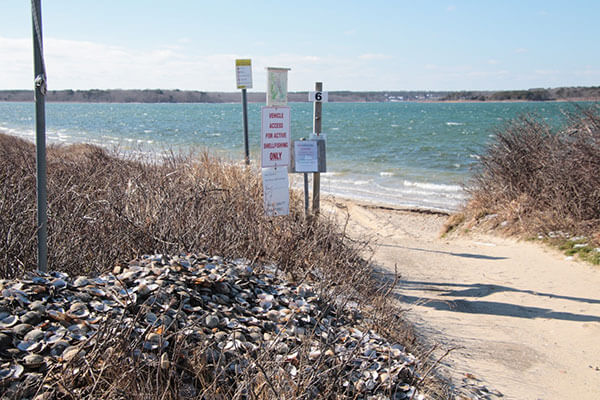
The first step to recreational oystering on Cape Cod is to get a shellfish license. Each town has its own rules and requirements, so it’s essential to research the licensing requirement for each town if you plan to catch oysters.
Some of the common towns to catch oysters in include:
- Truro – Resident annual $15/ Non-resident annual $100 / Non-resident 7-day $15
- Wellfleet – Resident annual $60 / Non-resident annual $210 / Resident seasonal $40 / Non-resident seasonal $85
- Brewster – Resident annual $25 / Non-resident annual $125 / Non-resident 7-day $20
- Yarmouth – Resident annual $30 / Non-resident annual $80
There are also age-based and military discounts in each of the above towns. Click the link of the town to learn more about the pricing options and purchase your license online.
When to Go Oystering on Cape Cod
Oyster catching season varies on Cape Cod based on the supply levels of oysters. Since oysters are a precious resource on the Cape, the levels are closely monitored. Typically the season will run from late October through early March.
If you happen to be on Cape Cod during Oyster season, the best time to go out is during the day around low tide, especially when the tide is lower than two feet. These conditions make it easier to find oyster reefs.
What Equipment Do I Need for Recrational Oystering on Cape Cod?
Recreational oystering is a relatively inexpensive hobby. However, there are a few pieces of essential equipment that you’ll need to get started. This includes:
- Chest waders – Help you stay warm and dry. They also help prevent clam itch, which can cause a rash.
- Neoprene gloves – Oyster shells can be sharp! It’s good to have protection from cuts to avoid infection.
- Floating basket – Good for collecting oysters once they’ve been caught.
- Oyster Rake – There are several different types, but they are all geared towards helping you dig below the ocean floor to collect oysters.
While not completely necessary, it’s also good to have a wet suit and diving gloves; It can get cold on Cape Cod! Since oystering is mainly done in the winter, you might want the extra layer to help keep you warm.
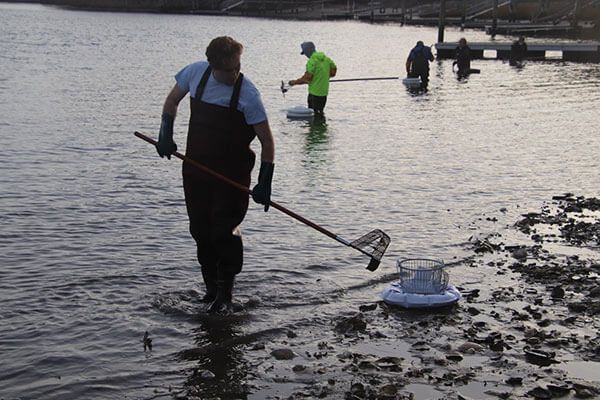
Once you have the proper tools oystering is really simple. All you need to do is wade into the water and use your rake to skim a few inches below the surface to collect the oysters. The hardest part is actually removing the oysters from whatever they may be attached to.
Just remember that an oyster must be at least 3 inches long to collect legally. Any shorter than that, the oyster needs to be returned to the water.
Additionally, always fill any holes that you create while looking for oysters. Failing to do so may harm the oyster populations and create a potential hazard for people.
Best Place to Catch Oysters on Cape Cod
Cape Cod is a haven for oystering. Some of the best places to catch oysters on the Cape include:
- Indian Neck (Wellfleet)
- Chipman’s Cove (Wellfleet)
- Pamet River (Truro)
- Waquoit Bay (Falmouth)
- Wychmere Harbor (Harwich)
- West Bay (Barnstable)
- Little Pleasant Bay (Orleans)
Check each town’s website to ensure that the above locations are not closed for the season. Dates may vary based on the supply of oysters in each area.
Sustainable Oystering on Cape Cod
Oysters play an essential role in keeping our waters clean. While recreational oystering is a fun hobby, it’s vital to ensure that we take precautions and practice oystering sustainably to protect the environment. Read about how the town of Mashpee has taken steps toward sustainability with its new shellfish aquaculture program.
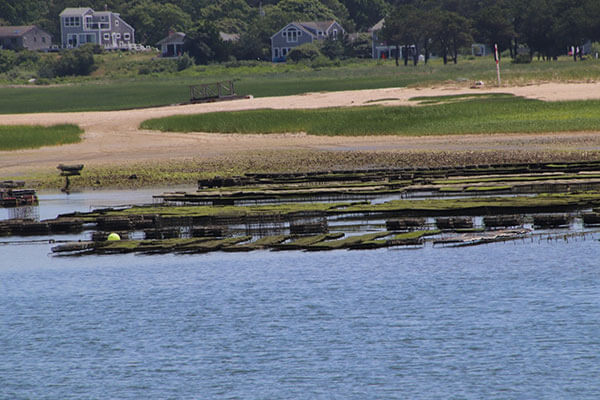
Shellfish Farms on Cape Cod
If wading through cold water to catch oysters doesn’t sound like a good time, there are still plenty of other ways to enjoy oysters from Cape Cod. Check out this list of Cape Cod Shellfish farms to see where you can start sampling some of the local oysters.








